Introduction
Autism spectrum disorder (ASD) stands as a testament to the complexity and diversity of human neurodevelopment. Characterized by distinct differences in social communication, behavior, and sensory processing, autism is increasingly understood not as a condition to be cured, but as a unique way of experiencing the world. This shift in perspective underscores the importance of embracing neurodiversity and promoting a supportive environment for individuals on the spectrum.
Scientific advancements continue to shed light on the intricate neurobiological underpinnings of autism, revealing significant insights into brain structure and function. Studies utilizing cutting-edge imaging techniques have identified unique neuronal deviations and patterns that correlate with autistic traits, paving the way for personalized therapeutic interventions. This evolving understanding highlights the importance of early detection and tailored support, which can significantly enhance the quality of life for autistic individuals.
The debate on whether autism should be viewed through a medical or neurodiverse lens remains pivotal. While some advocate for a medical approach focused on diagnosis and treatment, others champion the neurodiversity movement, which views autism as a natural variation of human experience. This inclusive perspective promotes a more nuanced understanding and acceptance of autistic individuals, recognizing their strengths and advocating for their rights and dignity.
Challenges persist in balancing medical perspectives with social acceptance, emphasizing the need for inclusive practices that honor the lived experiences of autistic individuals. By exploring various models—medical, social, and human rights—this article aims to provide a comprehensive understanding of autism. It advocates for a holistic approach that integrates scientific insights with the principles of neurodiversity, ultimately fostering a more inclusive and empowering environment for individuals on the spectrum and their families.
Understanding Autism: A Neurodevelopmental Disorder
Autism spectrum disorder (ASD) is widely recognized as a neurodevelopmental condition characterized by distinct differences in social communication, behavior, and sensory processing. Emerging in early childhood, it is typically diagnosed based on observable behaviors and developmental milestones. This perspective aligns with the understanding that this condition represents a unique way of experiencing the world rather than a conventional medical issue to be treated or cured.
Research underscores that ASD is a complex neuropsychiatric condition, with diverse cognitive and sensorimotor challenges. The intricate mechanisms behind these challenges remain elusive, although genetic factors are known to play a role. A significant study published in Perspectives on Psychological Science delves into the mental functionalities underpinning ASD, highlighting the deep-rooted connections within the nervous system that influence higher mental functions like learning and memory.
Moreover, recent technological advancements have revolutionized our understanding of the condition. For instance, a groundbreaking study using positron emission tomography (PET) scans revealed that the brains of autistic adults have fewer synapses compared to neurotypical people, directly correlating with the degree of autistic features exhibited. This discovery not only enhances our understanding of the neurological basis of the condition but also opens up new avenues for personalized therapeutic interventions.
'The evolving categorization of ASD reflects a shift from a purely clinical model to one that embraces the diversity and identity of neurodivergent people.'. This broader view acknowledges the shared characteristics across various neurodevelopmental conditions, promoting a more nuanced and personalized approach to support. As Dr. Giorgia Michelini notes, moving beyond rigid diagnostic labels enables clinicians to provide more tailored interventions for the wide range of challenges faced by neurodivergent people.
Statistics further highlight the prevalence and impact of developmental disabilities, including ASD. According to the Centers for Disease Control and Prevention (CDC), about 8.5% of children aged 3-17 in the United States have a developmental disability diagnosis, with ASD being a significant portion. This data underscores the necessity of early detection and intervention, which can significantly improve outcomes for children with developmental delays.
In summary, acknowledging this neurodevelopmental condition as a non-traditional health issue promotes a more inclusive and supportive environment for individuals on the spectrum. By embracing this perspective, we can better address their unique needs and promote their well-being.
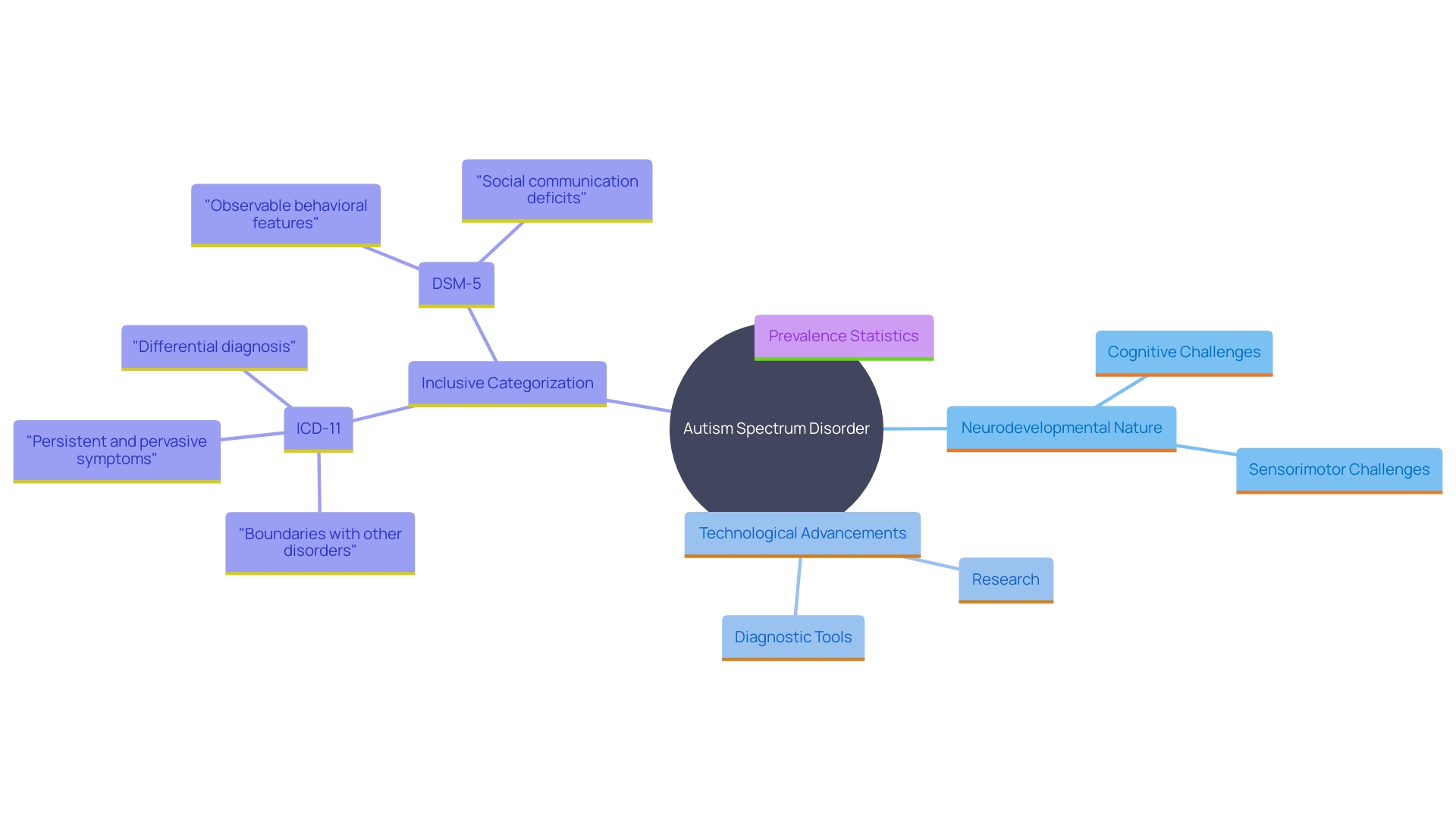
The Debate: Is Autism a Medical Condition or a Neurodiverse Trait?
The discussion on whether this developmental disorder is a health condition or a neurodiverse characteristic is complex and changing. Some advocate for a healthcare viewpoint, highlighting identification and intervention to address the difficulties linked to the condition. This perspective corresponds with studies that emphasize the genetic foundation of the condition and the necessity for medical interventions. For instance, a study by researchers at the University of California and Johns Hopkins University underscores the potential of genetic-first approaches to transform understanding and treatment of this condition, revealing patterns in brain structure linked to genetic variations.
On the other hand, proponents of the neurodiversity movement advocate for viewing this condition as a natural variation of human experience that should be accepted and celebrated. Dr. Giorgia Michelini from Queen Mary University of London introduces the concept of a 'neurodevelopmental spectrum,' which recognizes the shared characteristics of various neurodivergent conditions. This approach facilitates a more nuanced and personalized assessment, moving beyond rigid diagnostic labels to provide tailored support for the wide range of difficulties experienced by neurodivergent people. As Dr. Michelini explains, acknowledging these overlaps enables better identification and support for additional mental health challenges, which are prevalent among neurodivergent people.
This viewpoint is further backed by the efforts of Robert Chapman, a neurodivergent philosopher, who emphasizes the transition from perceiving this condition as a personal medical tragedy to comprehending it within the wider framework of neurodiversity. Chapman observes that neurodiversity challenges conventional ideas by considering external reasons for the difficulties encountered by autistic people, such as societal barriers and communication styles, instead of ascribing them solely to the person's condition.
Ultimately, the categorization of this condition has significant consequences for obtaining support services and meeting the requirements of those on the spectrum. 'Whether seen through a medical perspective or as a facet of neurodiversity, the aim persists to offer effective and compassionate assistance for autistic people and their families, acknowledging the varied expressions and requirements within this community.'.
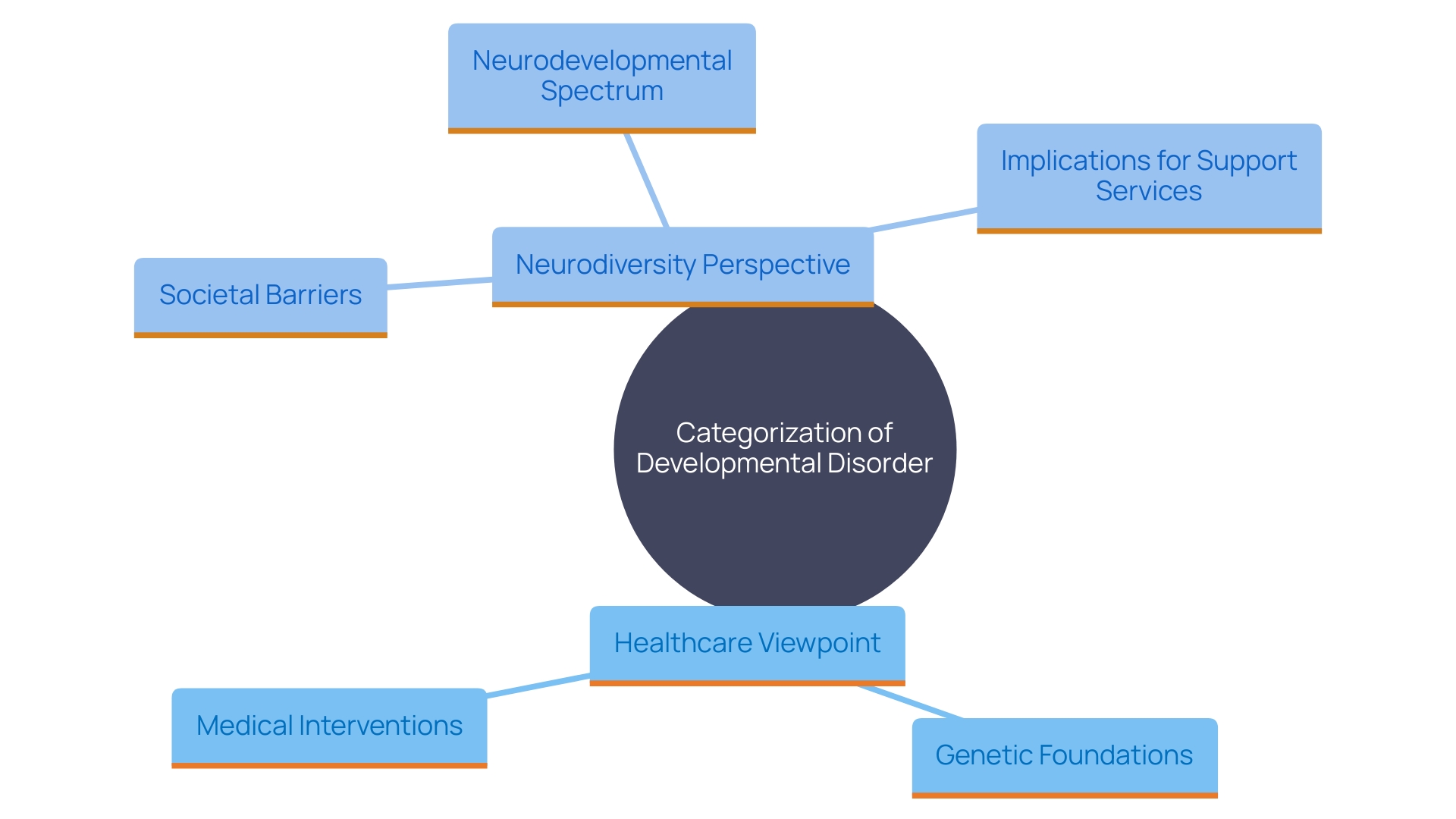
Neurobiological Perspectives on Autism
Recent neurobiological studies have uncovered important insights into the brain structure and function differences in people on the autism spectrum. Advanced imaging techniques, such as those from the Adolescent Brain Cognitive Development (ABCD) study, have revolutionized our understanding of these differences. For example, scans that identify cerebrospinal fluid distribution in infants can predict the likelihood of developing spectrum disorder (ASD). At 24 months, children with enlarged perivascular spaces—fluid-filled areas around small blood vessels—showed a higher risk of an ASD diagnosis and associated sleep problems between ages 7 and 12. This study underscores the potential for earlier diagnosis and intervention.
Furthermore, the accuracy of current technology enables researchers to consistently describe unique neuronal variations in people with autism. This capability creates possibilities for more targeted therapeutic interventions customized to each individual's requirements. As Dr. James McPartland from the Yale Center for Brain and Mind Health highlights, understanding the brain's neurodevelopmental conditions can lead to biologically-based tools that improve clinical care and quality of life for those on the spectrum.
These findings highlight the significance of tailored healthcare strategies that honor each person's unique neurological profile. By utilizing comprehensive neurobiological information, healthcare experts can create more efficient support approaches that address the particular requirements of people on the autism spectrum, ultimately improving their well-being and social inclusion.
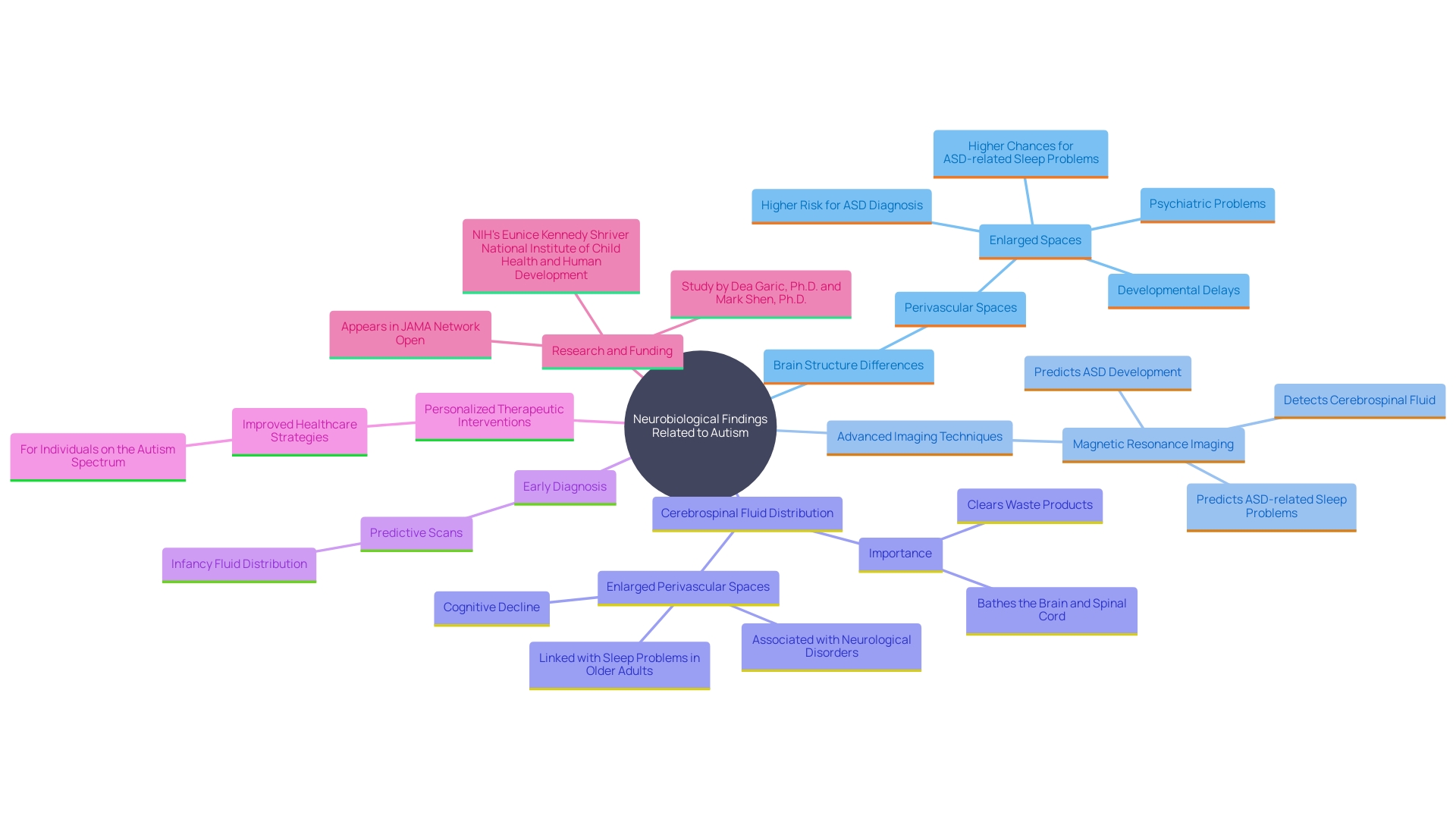
Challenges in Autism Research and Practice: Focus on Inclusion and Acceptance
Study and application in the area of developmental disorders encounter considerable obstacles, especially in reconciling health viewpoints with societal acceptance. Many individuals and families convey the desire for more inclusive practices that honor the lived experiences of autistic individuals while also addressing the support requirements they may have. Themes and priorities from diverse voices, such as those collected by the IACC, highlight the importance of personalized tools and services over a one-size-fits-all approach. This dual focus on medical and social dimensions can promote a more comprehensive understanding of the condition. Dr. Nicole Sharp emphasizes, "There is also a need for greater community awareness of the fact that this condition is not something to be fixed or cured," underscoring the value of neurodiversity and the necessity for societal inclusion.
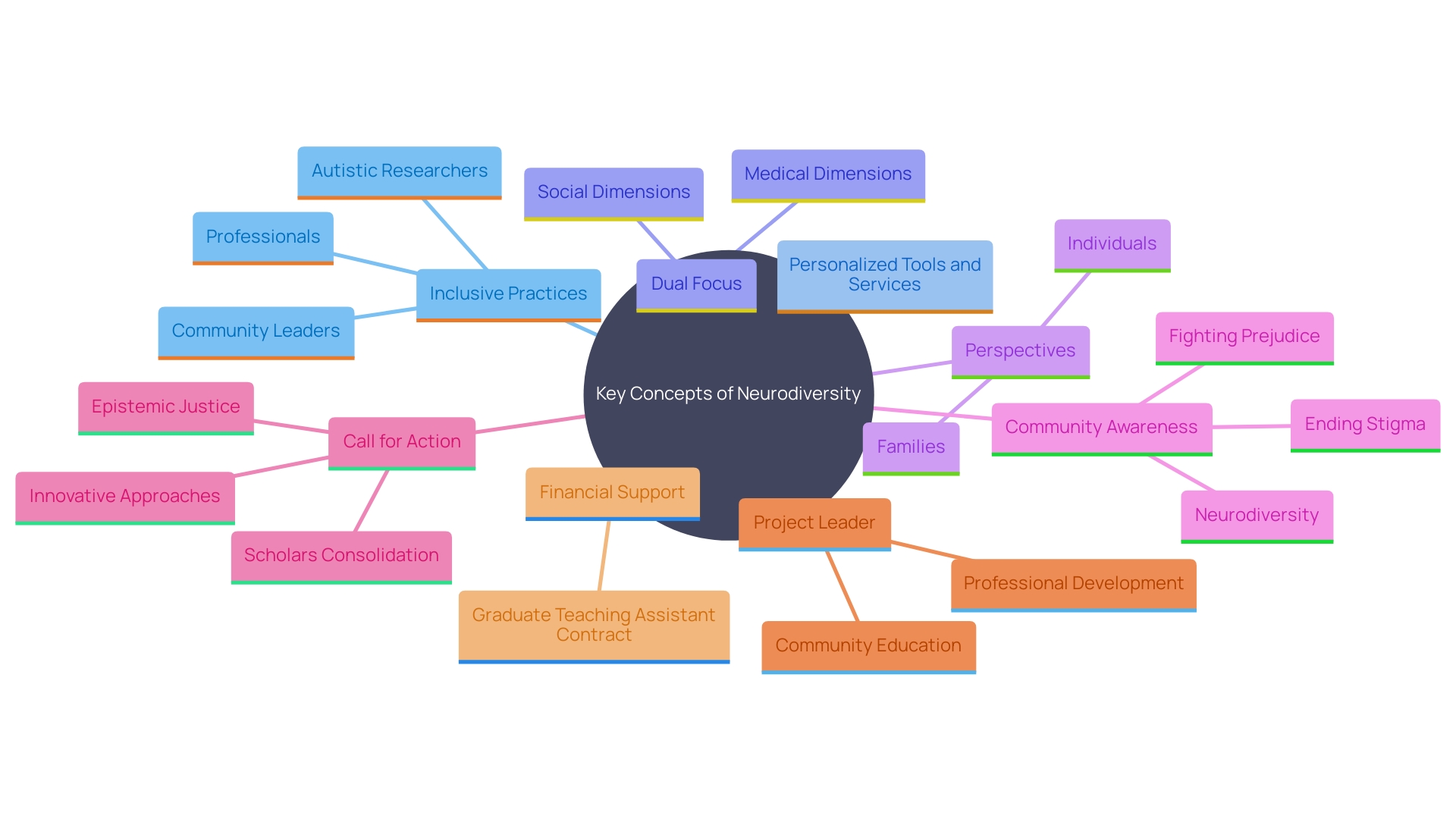
Exploring Different Perspectives: From Medical to Social and Human Rights Models
'Understanding autism requires exploring various perspectives that shape how we approach and support people on the spectrum.'. The medical model often emphasizes diagnosis and treatment, aiming to reduce symptom severity. However, studies have shown that addressing mental health issues, such as depression, significantly impacts the quality of life for autistic people, indicating the importance of a more holistic approach (Oakley et al., 2021).
The social model, conversely, emphasizes the obstacles that autistic people encounter in society. For instance, the CDC's 2023 Autism prevalence report noted disparities in diagnosis among different racial groups, with children of color often receiving diagnoses later than their White peers due to factors like stigma and lack of access to healthcare services. This delay can lead to missed opportunities for early intervention, which is crucial since children diagnosed by age 4 are fifty times more likely to receive necessary services.
Additionally, the human rights model advocates for the rights and dignity of autistic people, emphasizing their autonomy and the need for inclusive practices. 'The neurodiversity movement, which emerged in the late 1990s, supports this view by recognizing this condition as a natural variation of the human brain rather than a disorder needing a cure.'. This perspective encourages a person-centered and strengths-based approach, promoting meaningful living for those on the autism spectrum.
Incorporating these diverse perspectives enriches the dialogue surrounding the condition and informs more comprehensive approaches to support and advocacy. The Interagency Autism Coordinating Committee (IACC) exemplifies this by working to improve coordination and communication across the federal government and in partnership with the autism community, ensuring that the voices of autistic individuals, their families, and advocates are heard and considered in policy-making.
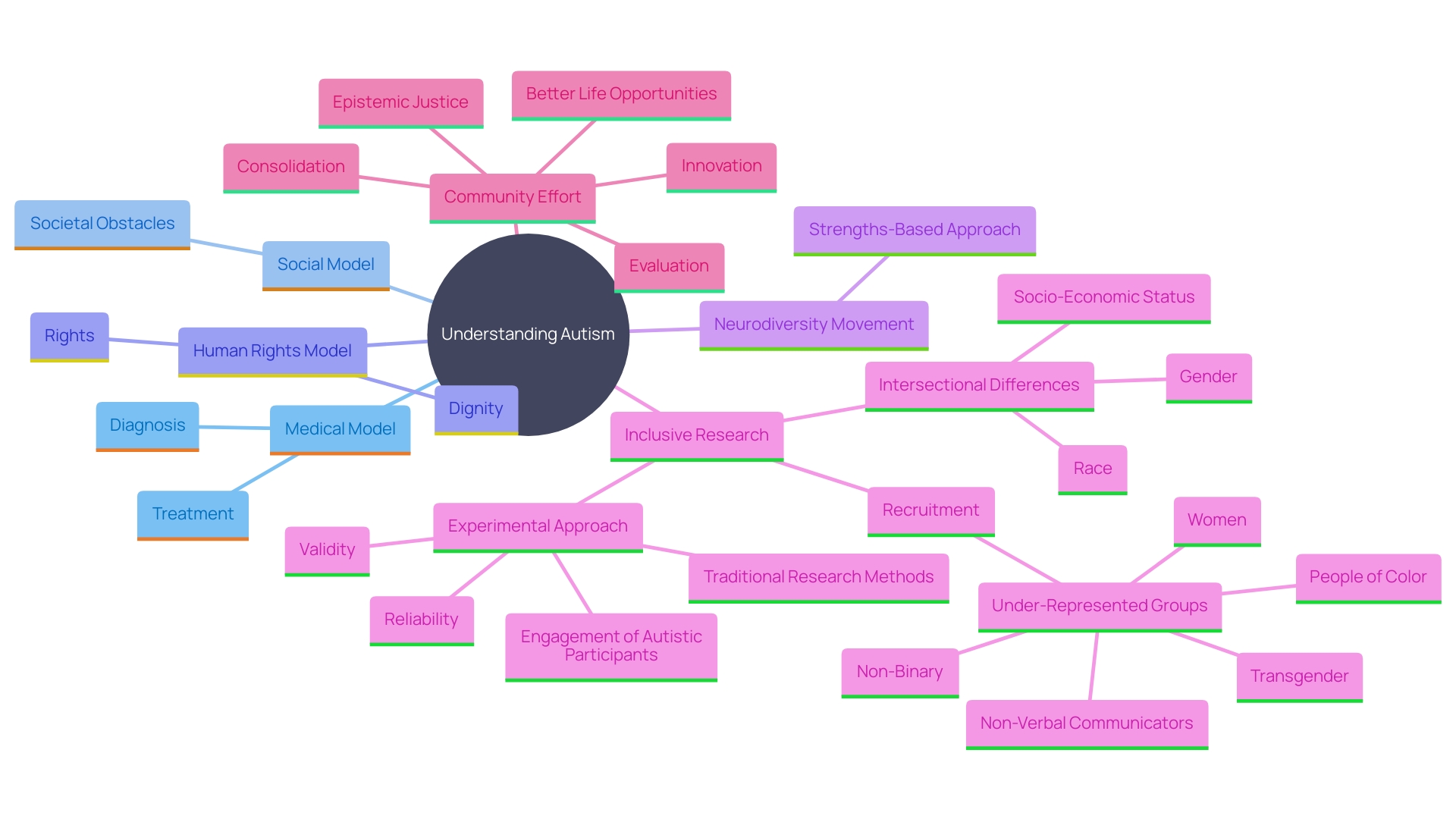
Conclusion
The exploration of autism spectrum disorder (ASD) reveals a multifaceted understanding of a condition that transcends traditional medical definitions. Recognizing autism as a neurodevelopmental condition emphasizes its unique characteristics in social communication, behavior, and sensory processing. This perspective fosters an inclusive environment that values neurodiversity, advocating for tailored support that enhances the well-being of individuals on the spectrum.
The ongoing debate between medical and neurodiverse viewpoints highlights the need for a balanced approach. While medical interventions may address specific challenges, embracing the neurodiversity movement encourages acceptance and celebration of autistic identities. This dual framework is essential for providing effective support, ensuring that interventions are not only clinically relevant but also respectful of individual experiences and strengths.
Advancements in neurobiological research further underscore the importance of personalized healthcare strategies. By leveraging insights from cutting-edge studies, practitioners can develop targeted interventions that align with each individual's unique neurological profile. This commitment to understanding autism at a biological level paves the way for improving clinical care and quality of life.
Challenges remain in bridging the gap between medical perspectives and social acceptance. Advocating for inclusive practices that honor the lived experiences of autistic individuals is crucial. By incorporating diverse viewpoints—from medical to human rights frameworks—society can create a more supportive landscape that recognizes the rights and dignity of all individuals on the spectrum.
The collective effort to promote understanding, acceptance, and empowerment will ultimately enhance the lives of autistic individuals and their families.




